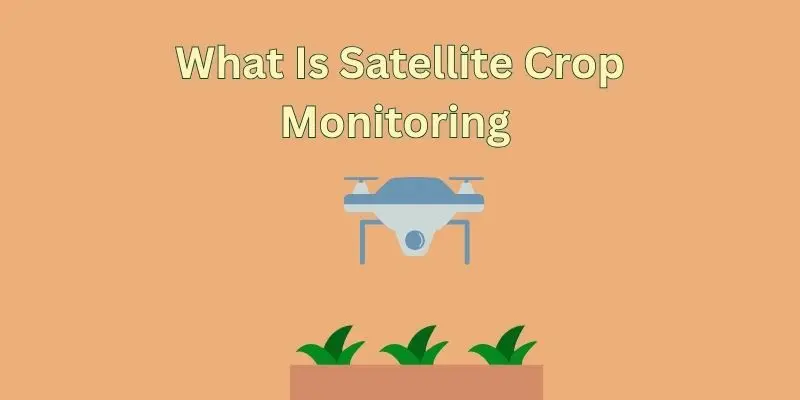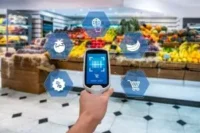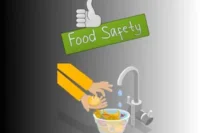Satellite Crop Monitoring Made Easy.A Simple Guide to Smarter, Healthier Farming
Published: 5 Jul 2025
You walk through your field every day, but you’re still not sure which crops are doing well — and which ones are silently dying.
Some areas look healthy but give poor yield. Others seem dry even after watering.
You try different fertilizers, more irrigation, even switch sowing dates — but nothing feels certain.
“Am I overwatering? Underfeeding? Missing a disease?”
If you’ve asked these questions, you’re not alone.
It’s time to stop guessing — and start seeing your farm through satellite eyes.
So, guys, without wasting time, let’s jump into the article to learn Satellite Crop Monitoring Made Easy: A Simple Guide to Smarter, Healthier Farming
2. What Is Satellite Crop Monitoring
- It is a system where satellites take regular images of your fields from space.
- These images are analyzed to track crop health, water stress, and plant growth.
- The data is shown on a map you can view on your phone or laptop — telling you where your crops are healthy or where they need help.

3. Benefits of Satellite Crop Monitoring
Satellite crop monitoring gives you clarity, control, and confidence by showing exactly what your crops need and when they need it.
1. Early Problem Detection
- Get alerts before a pest outbreak or drought damages your yield.
- Spot crop stress before it becomes visible on the field.
2. Save Water, Fertilizer, and Time
- Only apply what is needed, where it’s needed.
- Avoid over-irrigation or wasting fertilizer on areas that don’t need it.
3. Monitor Your Field From Anywhere
- Whether you’re at home, in the market, or out of town, your farm stays within your reach.
- No more stress about being physically present all the time.
4. Make Smarter Decisions With Data
- Plan harvests, fertilizer use, and irrigation with real facts instead of guesses.
- Use historical data to see which parts of your field perform best.
5. Be Ready for Weather and Climate Change
- Get soil moisture updates and monitor crop response to weather shifts.
- Stay ahead of changing climate conditions with satellite insights.
4. How It Works – Step by Step
- Satellites orbit the Earth and capture images of your farm.
- These images are analyzed to detect crop health and soil condition.
- You receive a visual map showing green (healthy), yellow (stressed), and red (critical) zones.
- You log into the app and make timely decisions — like where to water, spray, or skip.
5. Real-Life Applications for Different Crops
- Wheat and rice: Detect diseases and over-watering early.
- Corn and maize: Monitor nitrogen levels and insect pressure.
- Vegetables: Maintain uniform quality and harvest timing.
- Irrigated crops: Reduce water waste and monitor soil dryness efficiently.
6. Tools to Start With – No Technical Skills Needed
- EOSDA Crop Monitoring – Tracks vegetation, weather, and productivity.
- OneSoil – Free app for small and medium farms, simple to use.
- SatSure – Focused on South Asian farming, includes insurance and finance tools.
- Most platforms are mobile-friendly, offer language support, and need no hardware.
7. The Pain of Farming Without Monitoring
- You may not know where the disease starts until it’s too late.
- You could spend on fertilizers where they aren’t needed.
- Over-irrigation can reduce root strength, and under-irrigation can kill crops.
- All of this means lower income, even after working harder.
8. The Future of Farming with Satellite Technology
- Governments and agri-startups are adopting satellite tech for subsidy verification and insurance.
- More farmers now rely on satellite data for decisions than ever before.
- In the near future, these systems will include AI recommendations and yield forecasting.
- This isn’t the future anymore — it’s today’s best farming partner.
FAQs about Satellite Crop Monitoring Made Easy: A Simple Guide to Smarter, Healthier Farming
Here are some of the most frequently asked questions about Satellite Crop Monitoring Made Easy: A Simple Guide to Smarter, Healthier Farming
They use special sensors that detect plant health, soil moisture, and stress — and convert that into simple color maps for you to view.
Most satellite monitoring tools work through apps or websites — no drone, no sensor, no fancy device needed.
It’s a simple way to show how healthy your plants are using satellite images — greener means healthier.
You’ll know exactly where to go and what to check, instead of guessing or wasting effort.
Some satellite data may be delayed during heavy clouds, but most platforms use multiple satellites to fill gaps.
It can detect early signs of drought stress, pests, nutrient deficiencies, and poor growth.
No, many platforms are free or have very low-cost versions for small farms.
9. Final Emotional
- Satellite crop monitoring allows farmers to track crop health, soil moisture, and field conditions using satellite images and simple digital tools. It helps detect early signs of disease, drought, and nutrient deficiency, making farming more precise and efficient. By providing real-time data and visual field maps, even small farmers can make smarter decisions about irrigation, fertilizer, and pest control. Knowing these types of tools is essential in modern agriculture, especially in the face of climate change, rising input costs, and unpredictable weather — because better data means healthier crops and higher yields.

- Be Respectful
- Stay Relevant
- Stay Positive
- True Feedback
- Encourage Discussion
- Avoid Spamming
- No Fake News
- Don't Copy-Paste
- No Personal Attacks

- Be Respectful
- Stay Relevant
- Stay Positive
- True Feedback
- Encourage Discussion
- Avoid Spamming
- No Fake News
- Don't Copy-Paste
- No Personal Attacks





